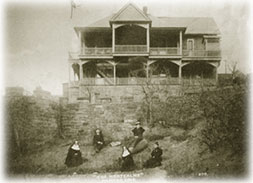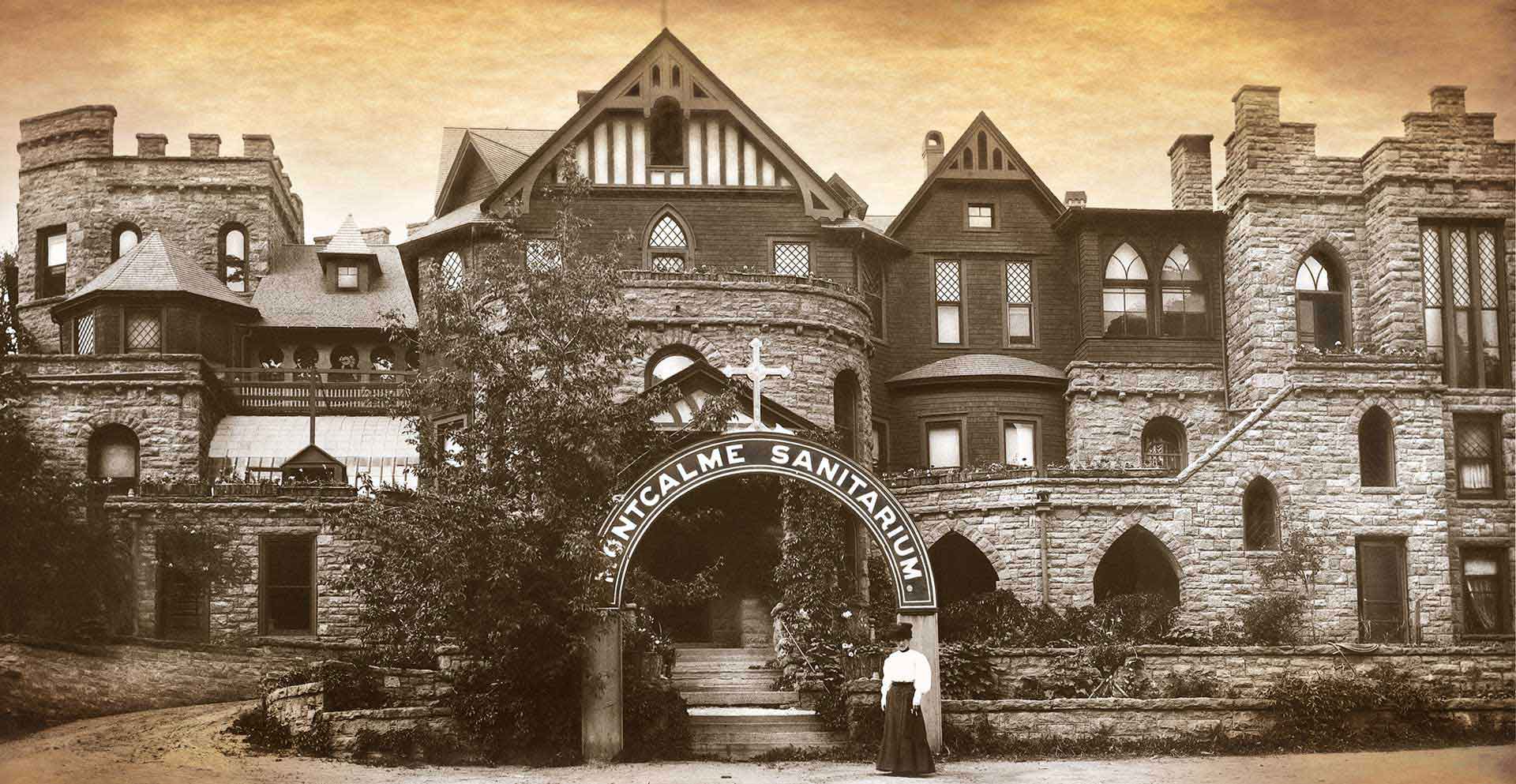Miramont Castle's Founder
In the Beginning...
Jean Baptiste Francolon, Architect of the Castle.

Father Francolon, born in France in 1854 into a wealthy aristocratic family, was the son of a diplomat who once served as the French consul in what is now Moscow, Russia.
Recruited by Bishop Lamy of Santa Fe, New Mexico while in Rome, Italy, Father Francolon immigrated to the United States in 1878 at the age of 24. He was ordained September 21, 1878, in Santa Fe, serving as assistant priest at the Cathedral of St. Francis of Assisi from 1878-1880. In March of 1881, he became the priest of Santa Cruz de la Cañada (Holy Cross), Santa Cruz, New Mexico overseeing mission churches at four Tewa-speaking Pueblos of Pojoaque, San Ildefonso, Santa Clara, Nambe, and eighteen small chapels in the valley of the Santa Cruz River until June 1886. He briefly returned to France for health reasons in late 1886 but resumed his parish duties in Santa Cruz from December 1887 to March 1892.
In 1892, seeking to restore his failing health, Father Francolon relocated to Manitou Springs, Colorado, known for its healing waters and clean air, as a missionary priest. His mother joined him in Manitou in July 1893. Newspaper accounts described the opulent furnishings, artworks, and antiques displayed in their home, indicating their previous wealth, though Father Francolon had experienced financial losses before coming to Colorado. He faced legal issues over payment for construction work on his property and took out a loan to cover expenses.
Father Francolon and his mother were somewhat recluse in the Manitou community, but they hosted two fundraising balls at the castle in 1897, one for a library and one for the poor.
Unexpectedly, the Francolons left Manitou in 1900, taking valuable artwork with them but leaving behind their furniture. Madam Francolon passed away near Beaulieu, France, in 1907. Father Francolon spent his final years in New York City, where he died on December 4, 1922, and was buried in the Archdiocese of New York Cemetery, never returning to Colorado.
Sisters of Mercy

The Sisters were renowned "for the excellence of their table, the cleanliness of their rooms and their motherly care of the health-seekers." They did not, however, accept acute cases, which they felt were better served by the hospital in Colorado Springs.
The Sisters helped to expand the cultural horizons of Manitou society by offering "lessons on piano, violin, mandolin, guitar and banjo" according to an advertisement in the July 11, 1896, issue of the Manitou Springs Journal.
Miramont was vacant from 1900 until 1904 when the Sisters were urged by a Dr. Geierman to purchase Miramont for use in conjunction with German priest Sebastian Kneipp’s (pronounced Ka-nipe) water therapy system, which consisted of drinking prodigious quantities of Manitou's mineral waters, as well as bathing in them several times each day. It was never used as a Kneipp center, however.
In 1907 an electrical fire destroyed Montcalme sanitarium, which was located where our upper parking lot is now, and the Sisters moved their patients into Miramont where they served for the next 20 years. For the prior three years changes had been made to the building to accommodate patients during their treatment period, but it was utilized only during the summer. It became known as Montcalme Sanitarium to keep the familiar name.
By 1928 it became economically impossible to continue with the sanitarium, and the Sisters used the building for a short time as a boarding house for the wealthy, then as a vacation and retreat house for clergy, and eventually vacated. It stood empty until it was sold in 1946 to private owners.
Located on the far back corner of the upper parking lot is the last remaining TB hut original to the Sisters of Mercy, where patients who required isolation lived during their stay for treatment.

Visit Miramont Castle
To Learn so much more!
The Castle is rich with history, pictures from the past and so much to read and learn. Enjoy a self-guided tour completely at your own pace. Click below to see our hours and admission costs.
Testimonials
Though the summer and winter of 1973/1974 I shared one of the nine apartments in the Castle with three other guys and three cats. Rent was $125. We spent more than that on cord wood for the fireplace- our only source of heat. Much of the building was closed off and dark and dusty; the apartments were occupied mostly by us "hippies." It was a friendly community with many visitors and while it was cold and snowing outside we would sit together on the floor in front of the fireplace sometimes playing guitars, games, or just talking. The TV series "Kung Fu" was popular with us and we would watch it as a group. We just called it "the Castle;" it was home for awhile and I've always considered myself fortunate to have experienced living there.

